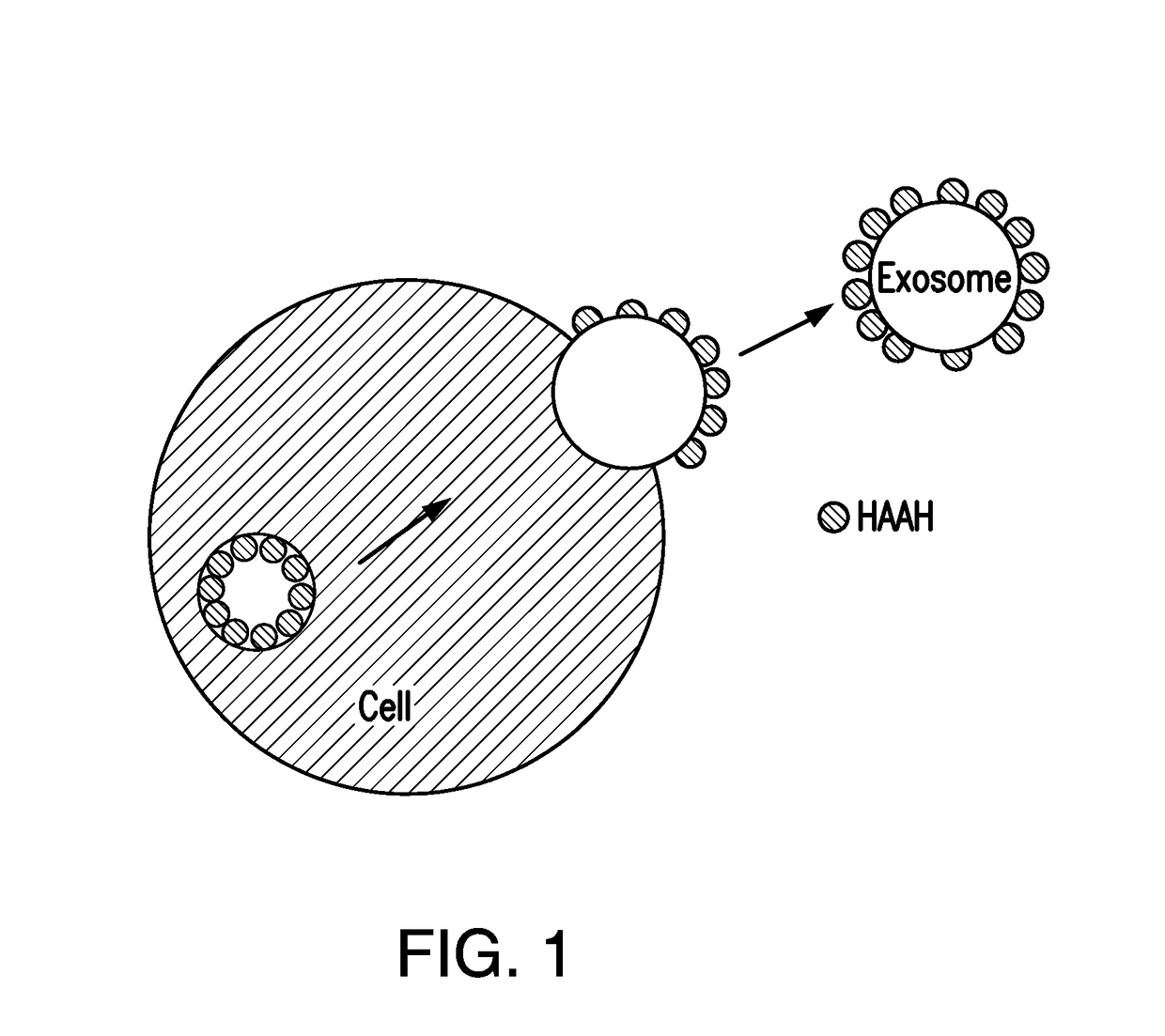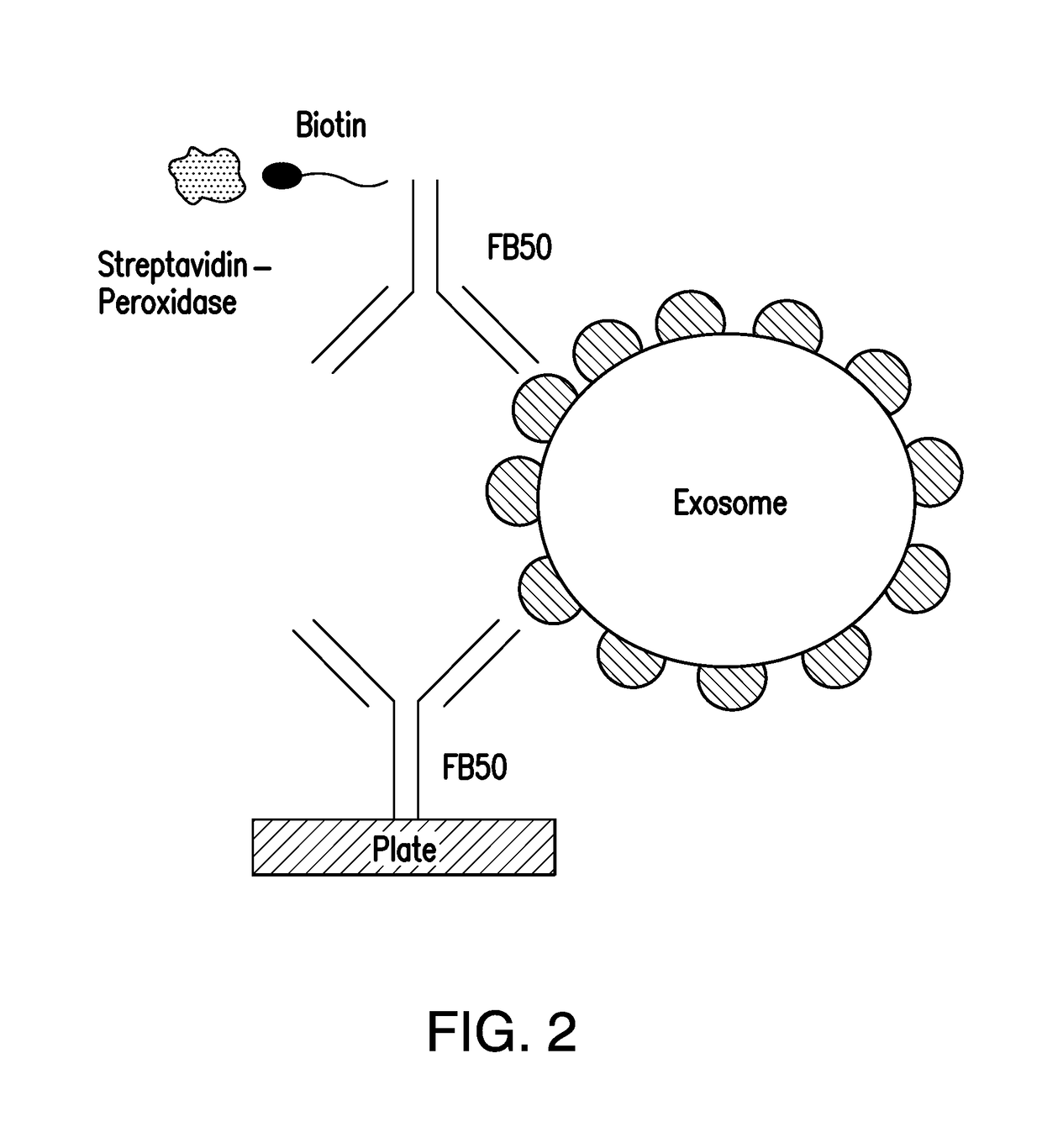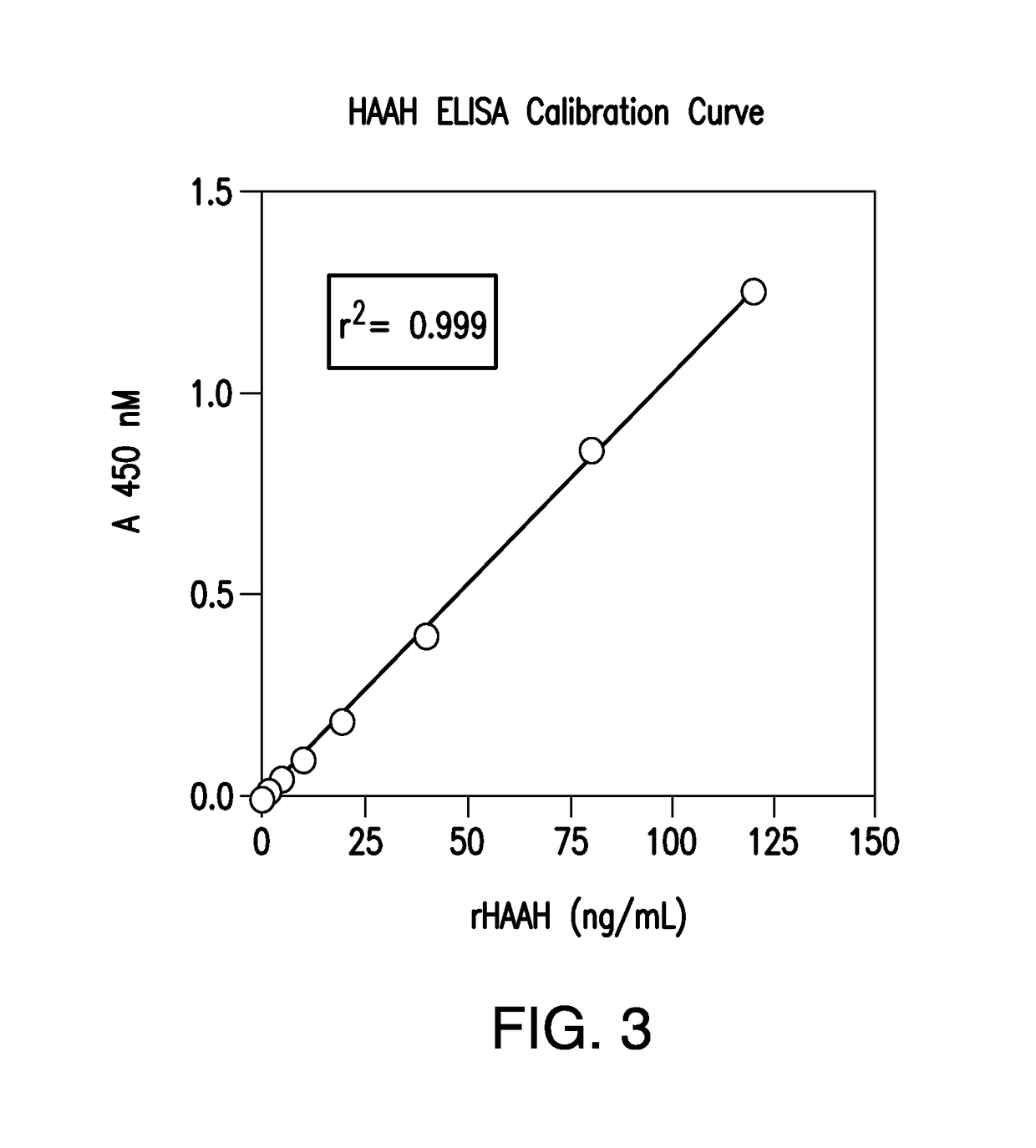Recovery of aspartyl (asparaginyl) beta hydroxylase (HAAH) from an exosomal fraction of human sera from cancer patients
a technology exosomal fraction, which is applied in the field of recovery of asparaginyl beta hydroxylase (haah) from exosomal fraction of human sera from cancer patients, can solve the problems of high unmet diagnostic needs and insufficient immunogenicity in animals, and achieve the effect of increasing the concentration of haah
- Summary
- Abstract
- Description
- Claims
- Application Information
AI Technical Summary
Benefits of technology
Problems solved by technology
Method used
Image
Examples
example 1
[0024]HAAH ELISA METHOD Using Native Serum or Serum Re-Constituted Exosomes as Test Articles
[0025]Samples for HAAH ELISA
[0026]Exosomes derived from cancer patient serum or normal volunteers were prepared either by ultracentrifugation or with the Exoquick reagent and suitably reconstituted with normal HAAH negative serum prior to use in the HAAH assay.
[0027]HAAH ELISA Calibrator
[0028]Recombinant HAAH was produced in advance of testing as an affinity purified baculovirus expressed protein and thereby served as an ELISA calibrator.
[0029]HAAH ELISA Method (see FIG. 9)
[0030]The HAAH ELISA was carried out in 96 well polystyrene microplates with monoclonal anti-HAAH FB50 in a homologous format whereby the same antibody was used for both capture and detection steps. The FB50 antibody was initially raised against the hepatoma cell line FOCUS and has been described previously in Lavaissiere, L. Jia, S. Nishiyama, M. de la Monte, S. Stern, A. M. Wands, J J. R. Friedman, P. A. (1996) J. Clin In...
example 2
[0036]Preparation of Exosomes
[0037]Exosomes were prepared from serum by a method essentially as described by the manufacturer of the ExoQuick reagent. Serum samples and controls (40 μL) were mixed with 10 μL of ExoQuick®. After overnight incubation at 4 C the samples were centrifuged at 1500×g for 30 minutes. After aspirating the supernate the pellets were reconstituted with 40 μL pooled normal serum. Exosomes prepared in this manner were evaluated by nanoparticle tracking analysis using the NanoSight (Malvern Instruments Ltd) instrument.
[0038]The same serum samples, for comparative purposes, were suitably diluted with phosphate buffered saline (PBS) and subjected to ultracentrifugation at 100,000×g for up to 8 hours in an Optima TLX (Beckman Coulter) benchtop ultracentrifuge. After aspiration of the supernate, the exosomal pellet was resuspended in pooled normal serum.
[0039]HAAH ELISA
[0040]The HAAH ELISA was carried out using the same capture and detection antibody FB50 applied tog...
PUM
| Property | Measurement | Unit |
|---|---|---|
| size | aaaaa | aaaaa |
| concentration | aaaaa | aaaaa |
| particle size distribution | aaaaa | aaaaa |
Abstract
Description
Claims
Application Information
 Login to View More
Login to View More - R&D
- Intellectual Property
- Life Sciences
- Materials
- Tech Scout
- Unparalleled Data Quality
- Higher Quality Content
- 60% Fewer Hallucinations
Browse by: Latest US Patents, China's latest patents, Technical Efficacy Thesaurus, Application Domain, Technology Topic, Popular Technical Reports.
© 2025 PatSnap. All rights reserved.Legal|Privacy policy|Modern Slavery Act Transparency Statement|Sitemap|About US| Contact US: help@patsnap.com



